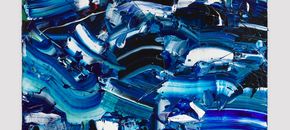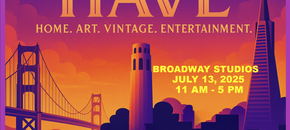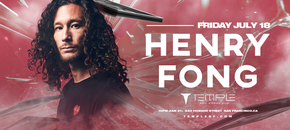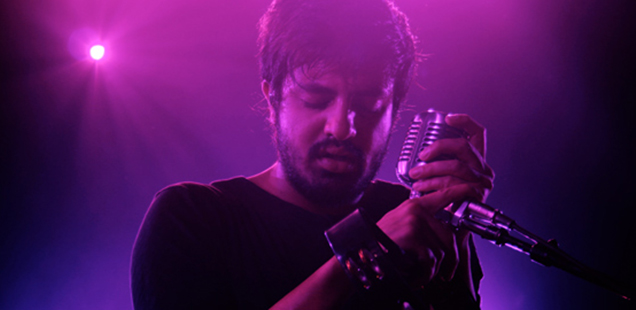Q&A: The M Machine’s Debut Album & San Francisco Roots

San Francisco-based duo The M Machine has called this city home for almost a decade now. From their early days as recent college grads taking classes at Pyramind Music Production School, to writing the great majority of their discography living in a warehouse/artist collective (formerly home to the band Journey), they have gone through their professional careers as musicians through a distinctly San Francisco lens. While their relationship with SF has changed over the years, the thing that has remained constant is the influence that the Bay Area and its residents have had on Eric Luttrell and Ben “Swardy” Swardlick.
After meeting in college at UC Santa Barbara, the pair moved up to SF with their former third band member Andy Cohen. As soon as they could make the jump to being full-time artists, they did. Since the early years of this decade, the group has put out three EPs on Skrillex’s label OWSLA and received resounding acclaim for their explosive sounds which found a home across the dubstep, electro and indie dance genres.
While producing club-oriented music over these past few years, they slowly began to amass softer, vocal-forward indie dance tracks that didn’t quite fit the style of the dancefloor bangers their former EPs contained. The sum of those “out of place” songs is what has just been released as their debut album, Glare.
To learn more about the album, we sat down with the duo to get an inside look into making and releasing the album, their evolving relationship with San Francisco and why pineapple on pizza is always a good idea.
How long have you been working on this album?
Eric: A long time. The first songs that we started writing were “Voyeur” and “Talking Machine.” Those were started in 2013. They’ve gone through a lot of variations and changed a lot but the initial ideas were put down a long time ago.
Swardy: I feel like it’s worth mentioning that we started in 2013 and then I don’t think we stopped working on the album until the end of 2016. The tracks were getting major overhauls for a long time but the ideas were brewed a while back.
You guys always seemed to be asked about your balance between club-centered music and your indie tracks that are more of a journey. How did that tension manifest itself in the making of Glare?
Swardy: We finished Metropolis and really had contributed to the ethereal world of DJ, ‘fist-pumpy’ music. It was cool that people loved “The Palace” and “Moonsong,” which were at a ten energy level. But what was really rewarding was when somebody would take us aside and be like, “hey man, ‘Faces’ means the world to me, I love every word in that song.” There were all these songs that we were being sandwiched between these high energy releases. So over the past three and a half years we stopped releasing them and started collecting them to begin building Glare.
How does your creative process work? Do certain members take on certain aspects of composition and production?
Eric: We both do everything, and that’s always how this project has worked, even with Andy in it. We all came together as people writing their own music but came to realize we could share ideas and work together based on someone’s initial idea. “Voyeur” is an example where I did the production of it, and then Swardy had a cool chorus idea. Or vice-versa: once Swardy is like 20-30% into a track, I’ll listen and might have a cool idea on how to add to it.
Swardy: There’s no division of labor or one thing that I only can do. Nine times out of ten you get that lucky thing that you wouldn’t have tried because you have been chipping away at a song for a while, so having someone’s fresh ideas/perspective always makes it better.
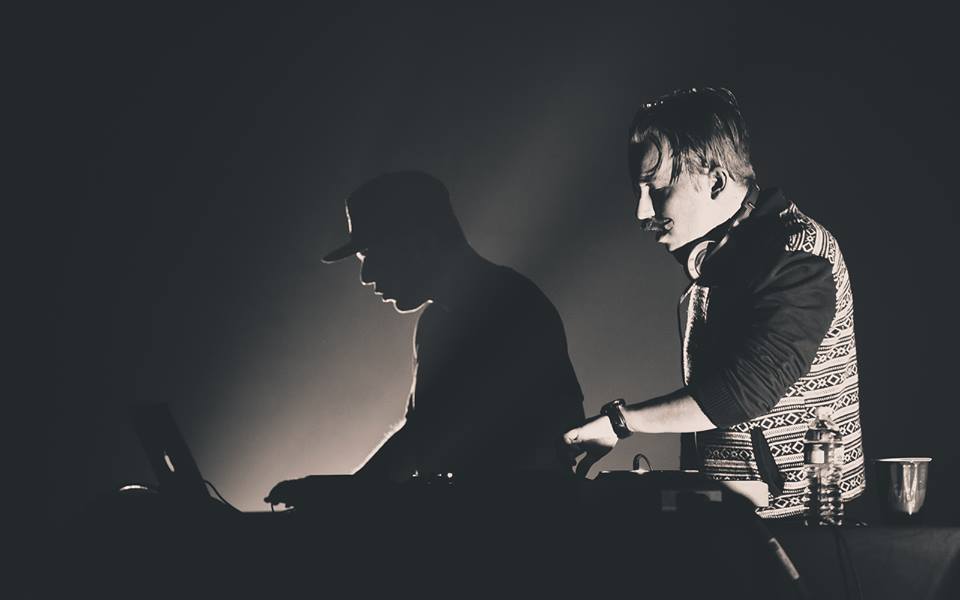
But you’ve mentioned that the ideas behind your songs are very individual and personal.
Swardy: Conceptual intent tends to be pretty personal, but with that said, most of the experiences that have shaped this album have been shared experiences. Eric, myself and Andy [Cohen]. We lived together for five years in a warehouse, we started our first band together which was Pance Party, so we all went through that shit together and channeled it into the songs.
What prompted the decision to release this project with Mad Zoo instead of your friends at OWSLA?
Swardy: Basically Mat Zo.
Eric: If you listen to Glare and then listen to what OWSLA is putting out right now, they are just totally unrelated. Stylistically it isn’t a match, but that doesn’t mean we wouldn’t work with OWSLA again, it’s just not the right home for this body of work.
Swardy: OWSLA’s mainstay has always been party music. Even with the early releases for The M Machine, people could hear the deeper, more cinematic elements of our music as compared to other releases. But at the same time, that music followed a road map in that you knew exactly when you were supposed to go nuts—that was work out music, even though aesthetically it had all the string arrangements and the drama and our cool, spacey vibe.
At the time that we realized we had a body of work that was made up of the more indie/vocal oriented songs, Mat was simultaneously filling our ears with how much he liked it and also that he wanted to get serious about adding new people to his record label. It was a perfect match. And that matters—it really matters to have the person in charge of your label really believe in your music.
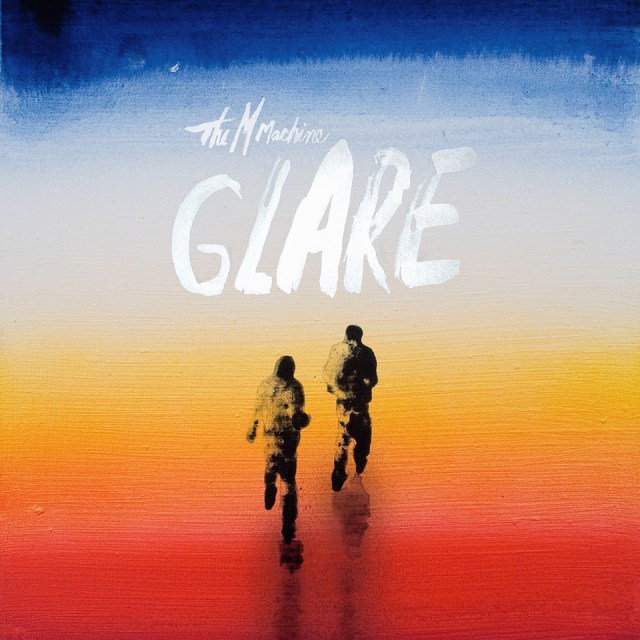
Compared with your cartoonish cover art on the Metropolis EPs, the cover for Glare is distinct. Where did it originate?
Swardy: We had been discussing the themes and conceptual side of the album, and we kept coming back to this idea of the way that people gather or isolate themselves around things differently. For example, the same stimulus might affect different people in totally weird ways. Or one culture would decide that an eclipse was a terrible omen and it was doomsday, while another culture would interpret it as a reason to celebrate. When we were trying to figure out whether something related to that idea could make its way onto the cover, we discovered an 87-year-old artist named Juan Genovéz. He’s from Valencia, Spain and he’s still working; he’s been active since the ’60s. He’s done studies on people in spaces, how they gather around certain issues or physical objects. We were eventually able to license a painting from him. The writing my cousin did and that was added on top of the art later.
You dropped a few singles from the album last fall, but a motherload of tracks on Glare were first revealed in the mix you did for local radio station BFF.fm last November. You’ve also been known to DJ at local co-ops and house parties and live right here in SF and it seems like you guys are committed to the local scene—can you speak a bit on that?
Swardy: It’s been a conscious choice to work on being more involved with the local community. We got more active in a Burning Man camp, we reconnected with a lot of our friends who had set down roots here and, as a result, began DJing our friends’ parties a lot. That kind of behavior pays dividends; that aloof, artist up on a hill kind of attitude can be a good way to make people think you’re cool on the internet, but it doesn’t do much else.
Eric: When you make an effort to become a part of the community, your life also gets better. All sorts of doors start flying open and you think, “wow, I didn’t even know this stuff existed.” I think it’s important but it took us a long time to realize that, and we hope to keep getting deeper into our Bay Area community.
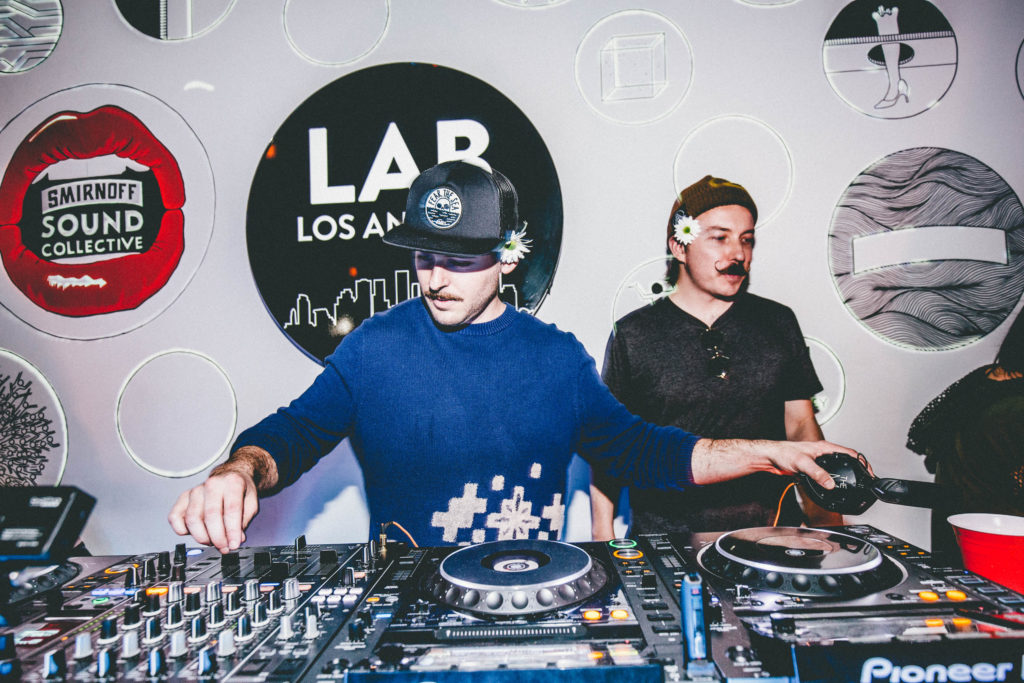
Former group member Andy did much of the incredible visuals for your shows. What has his departure meant for your performing visual aesthetic?
Eric: He built a system that we can do on our own while DJing. One of us can be DJing and the other can be VJing. We’ve got some content for that and I imagine when we go out to tour the new stuff, I’m sure we’ll get some more stuff built by him.
Swardy: He had to dumb down the system enough so that we could operate it on stage. Back when he was doing it, it was his role up there. It definitely is a bummer not to have a traveling VJ come with us but he built something that is super intuitive with a midi controller and we’ve gotten pretty into it.
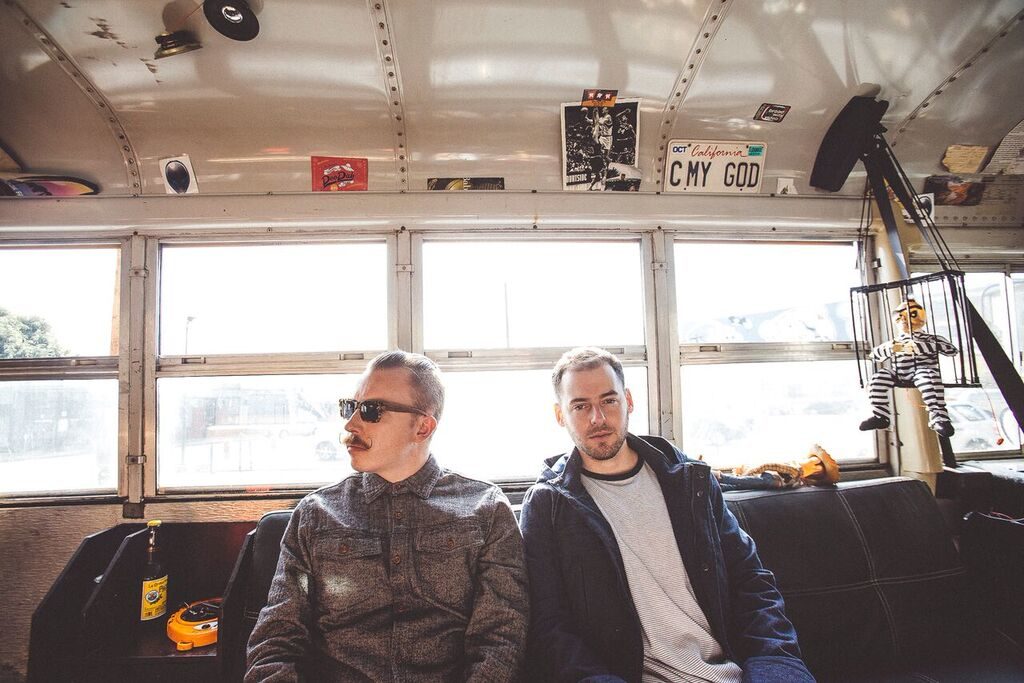
We heard that you used to live in the band Journey’s old warehouse and that it’s been home to a number of classic SF artists. Did that have anything to do with the song “The Warehouse”?
Eric: Yes totally. The artwork that was done for that single was done by our friend Casey Gray who lived in the warehouse the entire time with us. He’s a spray artist who still lives in the city, and that is a true Casey Gray style depiction of the warehouse. That’s a cool moment in our life. Five years, surrounded by other artists, right in that ‘year or two out of college’ grind. It had a world-class studio and walking into that was cool with so much history there. Unfortunately, the warehouse is a place that we wished had lasted longer. They tore it down to build a condo high-rise in the Dogpatch.
What’s your favorite venue in the city?
Eric: Probably Audio. It sounds really great, low ceiling vibe, DJ booth set into the crowd—it just feels really good.
Swardy: I’m gonna agree.
It’s no secret you two are big fans of the Dirtybird crew. Have you ever talked to them about playing at the Dirtybird Campout or doing any official collaborations?
Eric: We did get a remix from Worthy on the Just Like EP. That was awesome. We see those guys around and we live in the same neighborhood!
Swardy: Claude, if you’re listening, we’re available if you want us to come play the Campout! They have the most “take care of your own” crew of anybody we know. If you don’t release on Dirtybird, it’s pretty unlikely that you’re gonna be playing their shows. So maybe if we wrote some music that’s more in sync with their sound… But we’re pals. We see Justin Martin skateboarding down hills nearby and he goes to our grocery store. Shout out to Justin!

You both love pineapple on your pizza. What do you say to people who think the combination is just wrong?
Eric: Try it with jalapeños. It’s a game changer.
Swardy: Sweet, more pineapple pizza for me.
Ben you were a valet before M Machine took off and Eric you were working for the 2010 Census. Can you talk about the jump to being The M Machine full-time?
Swardy: Yeah my first job here was a valet, parking cars for Foreign Cinema. I did that first and then ended up renting out vans for a company who customizes vans for touring artists. The best part was when I rented a van to Benny Benassi and as The M Machine we were the openers for his show in SF.
Eric: As soon as we possibly could live off of just music, we did. It was never like, ‘oh, we have this huge pile of money let’s just chill out for a while.’ It was more like, we’re making just enough money to scrape by as musicians? Let’s do that.
Swardy: When we got here, we were going to music school at Pyramind and we were broke, which was alright because this is a fun city to be broke in with all the free shit to do. It was around 2012 when we were all done with our part-time jobs. We didn’t sleep much back then. We were so sure that if we put all our effort into a great first release, it would all work itself out. Lucky it did.
Is a Glare tour on the horizon?
Swardy: We can’t say anything about it yet, but yeah of course. If we were going to give any kind of a teaser, it’d be this: what’s most exciting about touring in the future will be our involvement with Mad Zoo.
Buy Glare here and get tickets to see The M Machine perform at The Independent on August 19.
